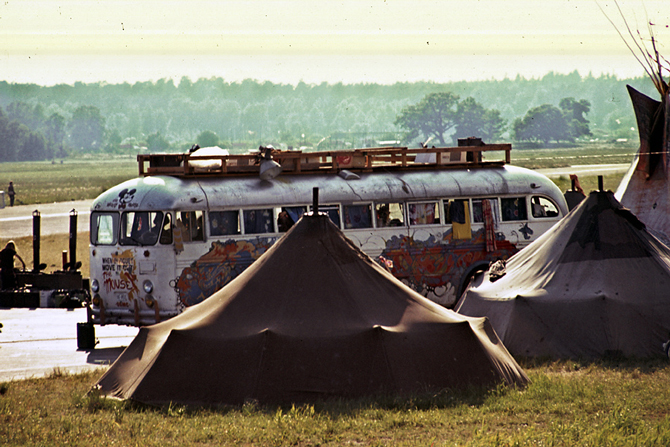Felicity D. Scott: "Woodstockholm"
This lecture will investigate the “Tent City” set up by the American commune Hog Farm for the 1972 United Nations Conference on the Human Environment in Stockholm, attempting to unpack its semantic and political resonances. Hog Farm were legendary for having fed and organized the crowds of youth at the Woodstock Music Festival in 1969, and the group’s activities at the UN’s inaugural environment conference quickly led to the nicknaming of the event as “Woodstockholm.” Hog Farm’s temporary “settlement” will be read not only in relation to counter-cultural aesthetic practices and contemporaneous “quick cities” designed by architects, but also in the context of the shifting politics of environmentalism and the paradigms of environmental management and “security” to which the UN conference gave rise. While hoping to demonstrate a form exodus from the biopolitical regulation inherent to the “American way of life” and its architectural correlates, Hog Farm’s architecture of “survival” resonated all too uncannily with the spatial violence and environmental injustice that formed the global counterpart to that very way of life.
Tid: To 2012-04-26 kl 18.00
Plats: Arkitekturmuseet

Felicity D. Scott is assistant professor of architecture and director of the program in Critical, Curatorial and Conceptual Practices in Architecture (CCCP) at the Graduate School of Architecture, Planning and Preservation, Columbia University. She is also a founding co-editor of Grey Room, a quarterly journal of architecture, art, media, and politics published quarterly by MIT Press since Fall 2000.
Her work as an architectural historian and theorist focuses on articulating genealogies of political and theoretical engagement with questions of technological transformation within modern and contemporary architecture, as well as within the discourses and institutions that have shaped and defined the discipline. In addition to publishing numerous articles in journals, magazines, and edited anthologies, her book, Architecture or Techno-Utopia: Politics After Modernism, was published by MIT Press in 2007, and another book, Living Archive 7: Ant Farm, appeared on ACTAR Editorial in May 2008. She has recently completed the manuscript for a book entitled on the Austrian émigré architect Bernard Rudofsky, entitled “Cartographies of Drift: Bernard Rudofsky’s Encounters with Modernity,” and has undertaken substantial research and writing on her subsequent book-project, “Outlaw Territory,” which investigates architecture’s relation to “human unsettlement” and territorial insecurity. She has also written on contemporary art and architecture for magazines including Artforum and Texte zur Kunst as well as in exhibition catalogs.
She received her PhD from Princeton University in 2001, and an MAUD from Harvard University in 1994, and is the recipient of many awards, including Graham Foundation for Advanced Studies in the Fine Arts Grant (2011), a New York State Council on the Arts Independent Project Award (2010), a Clark Fellowship (2008), an Arts Writers Grant from Creative Capital/Warhol Foundation (2007), a J. Paul Getty Postdoctoral Fellowship (2002-2003), and a Henry Luce/ACLS Doctoral Dissertation Fellowship in American Art (1998-1999).
The lecture is arranged by the KTH School of Architecture and the strong research environment Architecture in Effect in collaboration with the research group OCCAS, Oslo School of Architecture AHO, and The Swedish Museum of Architecture.

